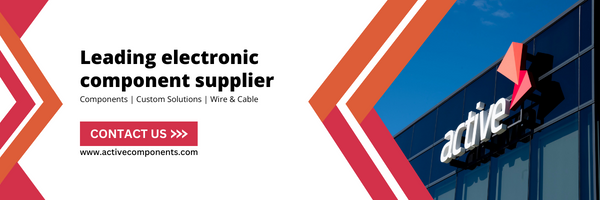-(1).png)
How to Choose the Right Battery for Your IoT Devices
In the ever-changing world of IoT, picking the right power solution is key to making your devices work well. The perfect battery does more than just power your devices; it boosts their efficiency, performance, and reliability. But finding the right one isn't always simple. Where and how you plan to use the technology will largely shape the battery's size and the tech specs you'll need. These factors also need to be weighed against the cost.
In this blog post, we're going to walk you through the important things to consider when choosing a battery for your IoT product.
1. Wide Operating Temperature Range
IoT devices are often exposed to varying environmental conditions, from the chilly cold of a warehouse to the scorching heat of direct sunlight. Choosing a battery with a broad operating temperature range is important to ensure that your product performs well under any condition, without a drop in performance.
In low-temperature conditions, chemical reactions within the battery slow down, reducing the battery's efficiency and potentially shortening its lifespan, the batteries can struggle to maintain their charge and deliver the required power. Therefore, for devices in cold environments, a battery that can withstand low temperatures and maintain a stable performance is essential to prevent power loss and ensure reliability.
Conversely, in high-temperature environments, such as industrial sites in hot climates or outdoor equipment exposed to direct sunlight, batteries face the risk of overheating and accelerated degradation. High temperatures can cause internal components of the battery to deteriorate faster, leading to a decreased capacity and a shorter overall life. In these cases, a battery designed to handle high temperatures is necessary to avoid overheating issues and ensure that the device continues to function effectively over time.

2. High Specific Energy Density
The battery energy density is crucial because a battery with higher energy density can sustain a charge for a longer period relative to its size. A battery with a high specific energy density can store more energy in a smaller volume, which is particularly advantageous for compact and portable IoT devices that need to operate for extended periods without frequent recharging. In IoT applications, from wearable tech to remote sensors, minimising size, and weight without sacrificing battery life is essential. A high specific energy density enables the development of smaller, lighter devices that are easier to install and more convenient to use, especially in applications where the device needs to be unobtrusive or fit into limited spaces.

3. Long Lifespans
The longevity of a battery in IoT devices determines the maintenance schedule and total cost of ownership. Batteries with long lifespans can help ensure the reliability and performance of IoT devices. This reliability is crucial for maintaining the integrity of data collection and the functionality of IoT systems, particularly in applications where real-time data monitoring and analysis are vital for decision-making purposes.
 4. High and Stable Voltage
4. High and Stable Voltage
High and stable voltage in batteries is key to the reliable and efficient operation of IoT devices. It ensures consistent device performance, accurate data transmission, and contributes to the overall durability and effectiveness of IoT systems.
Voltage fluctuations in a battery can cause problems such as erratic device behavior, data corruption, or even premature device failure. For instance, if an IoT device like a sensor or a smart meter receives an inconsistent power supply, it may not function correctly, leading to inaccurate readings or loss of data. A battery that provides high and stable voltage ensures that IoT devices can operate efficiently and perform their tasks as expected.
In IoT systems, where numerous devices often work together, having a reliable power source with stable voltage is vital to ensure seamless integration and communication between devices.
Conclusion
Selecting the right battery for your IoT devices is paramount to ensuring their efficiency, reliability, and longevity. At Active Components, we assist you in finding the perfect match for your project, from individual components to comprehensive solutions, ensuring you have the ideal fit for your needs.

